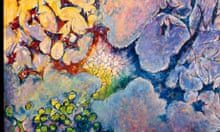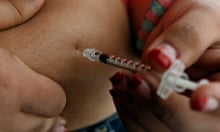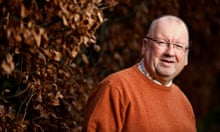A radical and remarkably easy way to make cells that can grow into any tissue in the body has been developed by scientists in Japan.
The feat has been hailed as a major discovery by researchers familiar with the work, and if it can be repeated in human tissue, could lead to cheap and simple procedures to make patient-matched stem cells that could repair damaged or diseased organs.
In a series of elegant experiments, researchers showed that cells plucked from animals could be turned into all-powerful master cells simply by immersing them in a mildly acidic solution for half an hour.
To demonstrate the potential of the cells, the scientists injected them into mouse embryos and showed that they grew into tissues and organs throughout the animals' bodies.
Haruko Obokata at the Riken lab in Kobe, Japan, told the Guardian that her team had created several dozen mice that had tissues grown from the cells, and had followed their health for one to two years. "So far they appear to be healthy, fertile, and normal," she said.
The finding has stunned many researchers because previous attempts to make stem cells have been fraught with difficulties. One route is cloning, which is controversial because it involves the creation and destruction of embryos. A more recent method, called induced pluripotency, uses genetic manipulation to convert adult cells into a more flexible, immature state.
The work, reported in two papers in the journal Nature, was "a major scientific discovery that will be opening a new era in stem-cell biology," said Dusko Ilic, a stem-cell scientist at King's College London.
His enthusiasm was shared by Chris Mason, a stem-cell expert at University College London. "If it works in man, this could be the game changer that ultimately makes a wide range of cell therapies available using the patient's own cells as starting material," he said.
Obokata started work on the procedure five years ago while working at Harvard Medical School. The idea came to her after noticing by chance that cells that had been squeezed through a thin tube shrank to the size of stem cells. She went on to look more closely at what effects different kinds of stress – from heat, starvation and acidic conditions – had on cells.
After years of perfecting the experiments, Obokata showed that she could convert white blood cells taken from newborn mice into cells that behaved very much like stem cells. She went on to do the same with brain, skin, muscle, bone marrow, lung and liver cells. "It was very surprising to see that such a remarkable transformation could be triggered simply by stimuli from the outside," she said.
Obokata had trouble convincing other scientists, and her paper on the work was rejected several times. She eventually completed enough cross-checks to satisfy researchers that the findings were real.
Obokata calls the procedure "stimulus-triggered acquisition of pluripotency", and the resulting cells Stap cells. Immersion in a mild acidic solution, with a pH of 5.5, worked best. Squeezing cells had a similar effect but was less efficient.
"The generation of these cells is essentially Mother Nature's way of responding to injury," the lead author of the studies, Charles Vacanti at Havard Medical School, told Nature.
Austin Smith, director of the Wellcome Trust/MRC stem cell institute at Cambridge University, said the work looked sound, but that it was unclear whether it would work in humans and with adult tissue, such as skin cells taken from a patient.
If scientists can get the procedure to work in people, it could quickly overcome regulatory hurdles that have held up the development of therapies based on induced pluripotent stem (iPS) cells. Therapies based on iPS cells face scrutiny because genes are added to the cells to convert them into stem cells. These genes probably need to be removed before they can be used safely in patients.
Obokata said work was under way to repeat her experiments with human tissue, but that they had no results yet. One of the many remaining questions is why cells in the body are not constantly turning into stem cells when they come into contact with acid, with heart burn, or when people drink fruit juice. The suspicion is that the ability to revert to stem cells is blocked when cells are in the body.
Even if the procedure can be perfected in humans, Smith said major hurdles remain before patients could be treated with Stap cells. Any tissues grown from Stap cells would need to be proved safe in the body. Scientists would have to show they cannot turn into tumours, and demonstrate that they work with patients' healthy tissues without causing problems.
Obokata said the new procedure might have uses beyond regenerating damaged body parts, and shed light on the way cells gather wear and tear through our lifetimes. "By studying the mechanism we might be able to learn more about how the age of cells is also locked in," she told the Guardian.










Comments (…)
Sign in or create your Guardian account to join the discussion